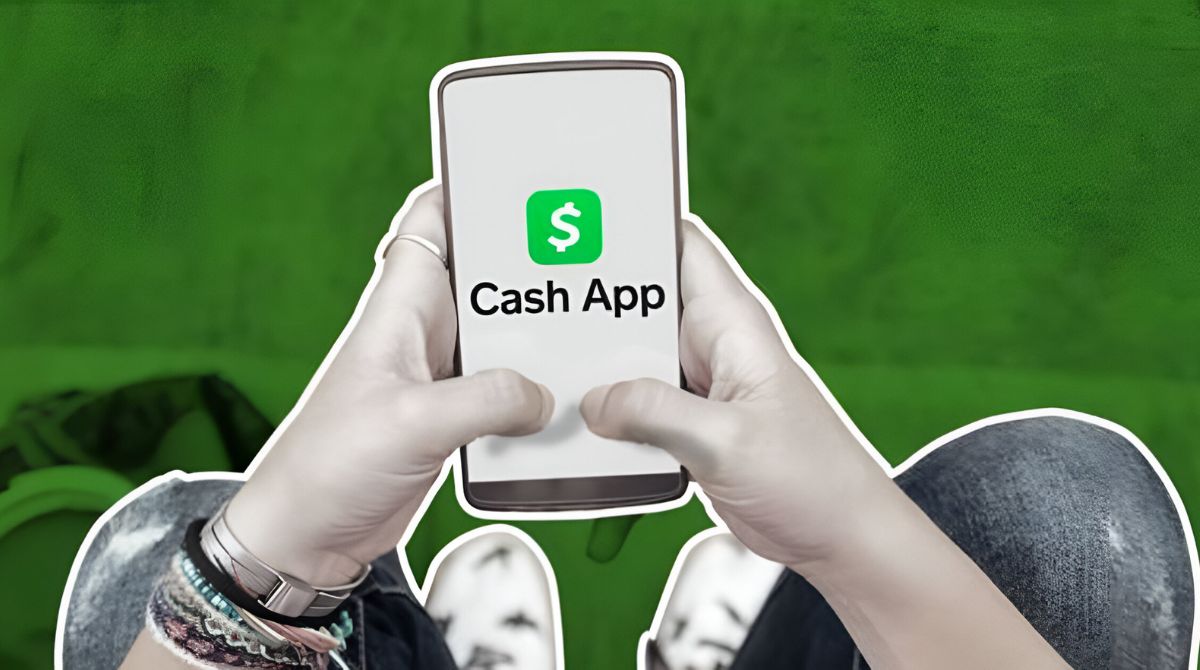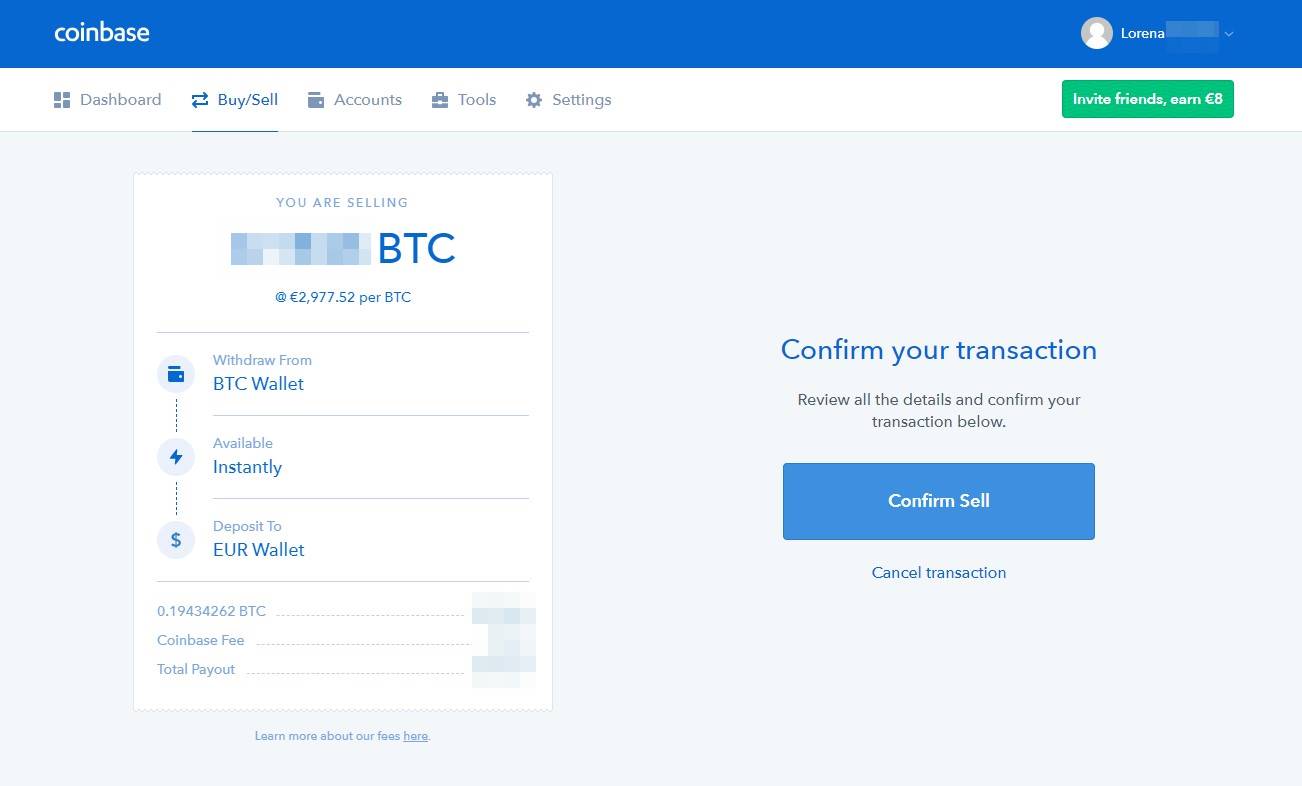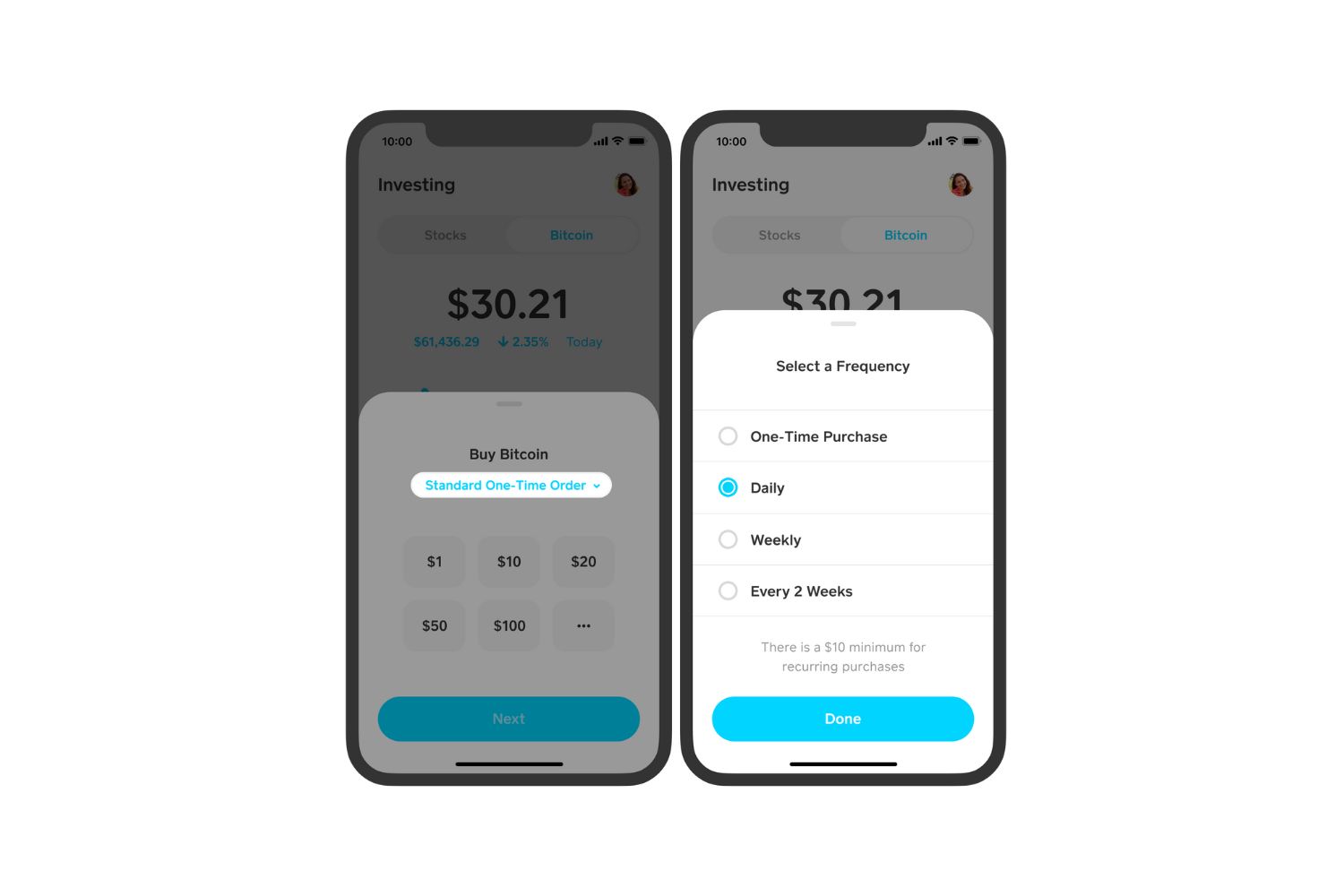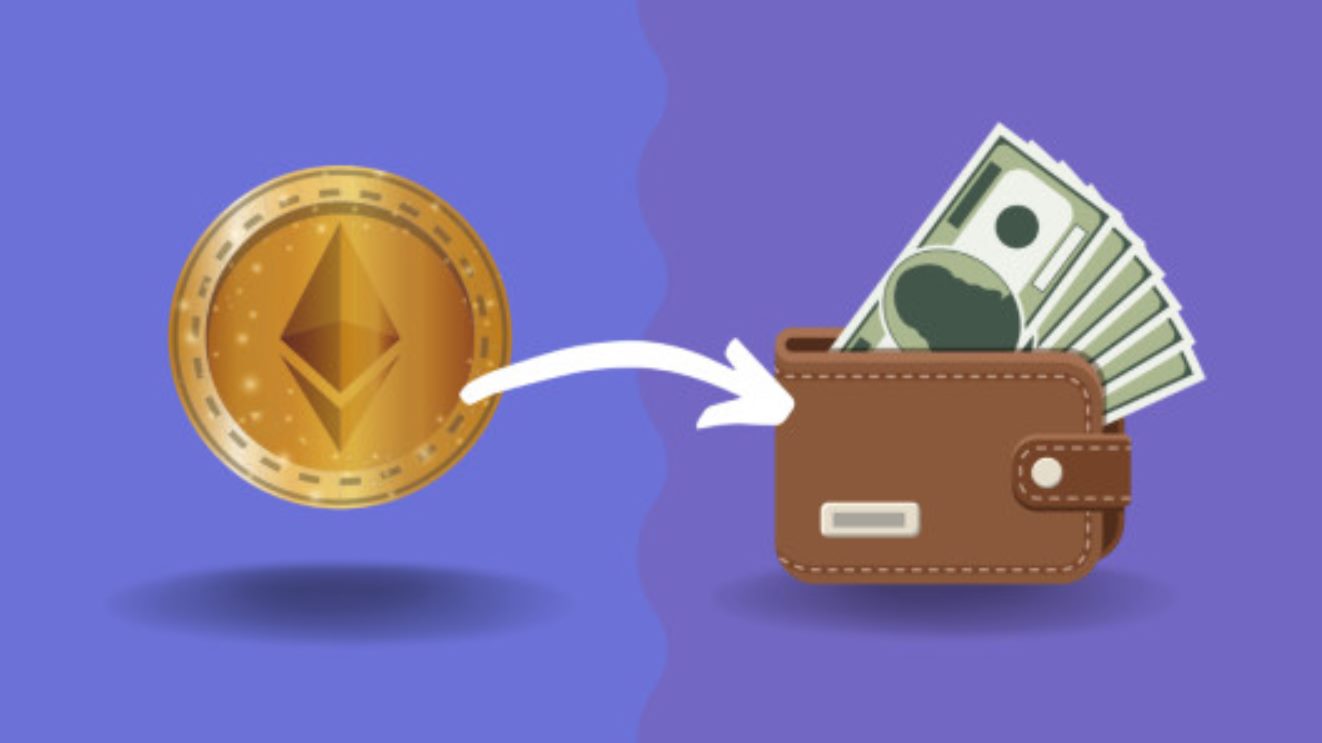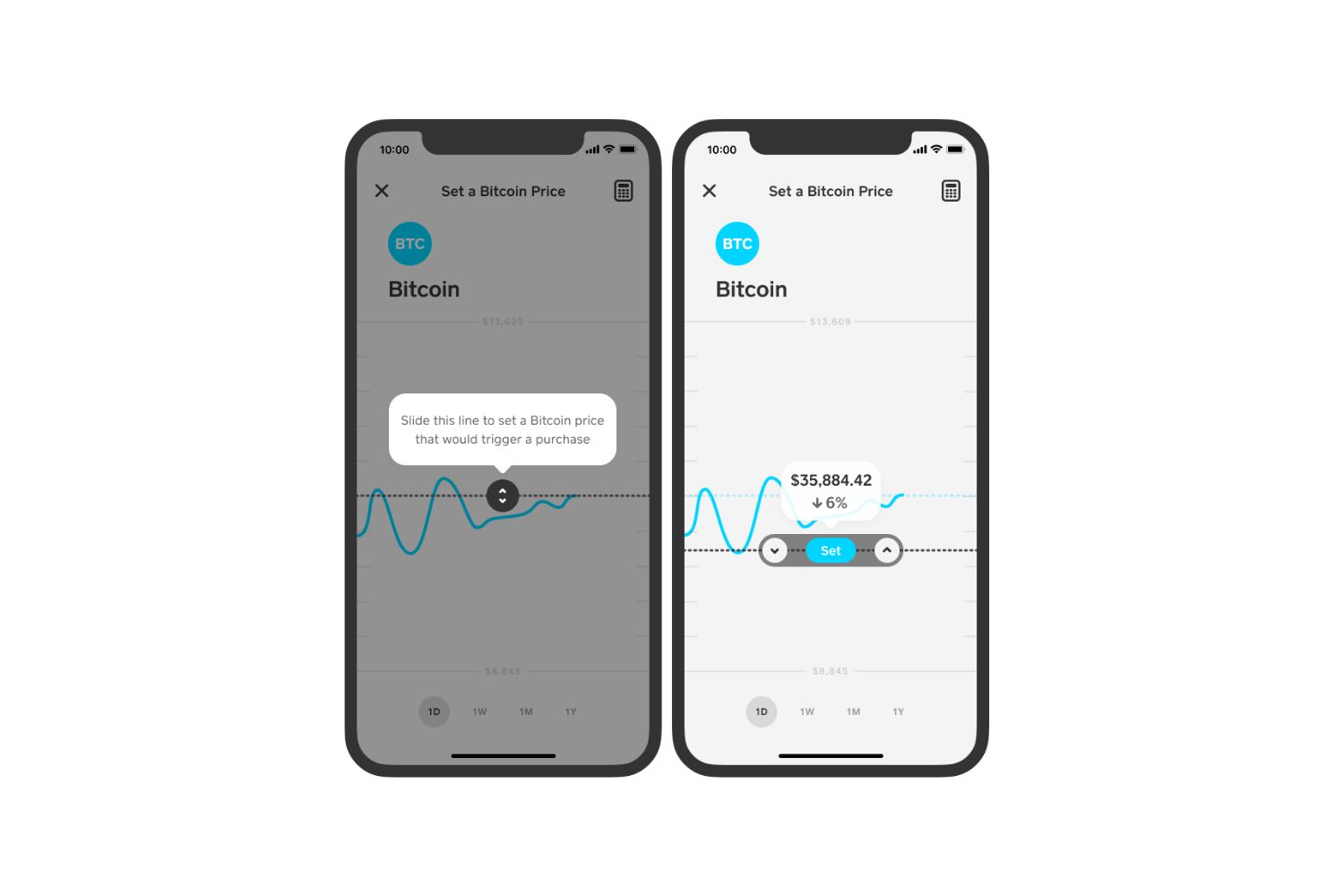Introduction
Welcome to the fascinating world of cryptocurrencies, where digital assets like Bitcoin have revolutionized the way we store and exchange value. While Bitcoin offers many advantages, there may be instances when you want to convert your Bitcoin holdings into traditional cash. Whether you’re looking to reap the profits of your investment, make a purchase, or simply have some cash on hand, there are several methods available to turn your Bitcoin into cash.
In this article, we will explore various ways you can convert Bitcoin into cash, providing you with the necessary information to make informed decisions. From setting up a wallet to choosing a reliable exchange and utilizing peer-to-peer trading platforms, we will cover the most popular methods for converting your Bitcoin into cash.
Before we delve into the different methods, let’s briefly understand the concept of Bitcoin and cash. Bitcoin is a decentralized digital currency that operates on a peer-to-peer network known as the blockchain. It allows for secure and anonymous transactions, free from the control of any central authority.
On the other hand, cash refers to traditional currencies like the US dollar, euro, or any other fiat currency issued by a government. Cash is widely accepted as a medium of exchange for goods and services and is regulated by central banks and governments.
Now that we have a basic understanding of Bitcoin and cash, let’s explore the various methods you can use to convert your Bitcoin into cash. Whether you prefer to sell Bitcoin on an exchange, use Bitcoin ATMs, or engage in peer-to-peer local trading, there are options available to suit your needs and preferences.
Understanding Bitcoin and Cash
Before diving into the methods of converting Bitcoin into cash, it’s important to have a solid understanding of both Bitcoin and cash.
Bitcoin, often referred to as a cryptocurrency, is a digital form of currency that operates on a decentralized network called the blockchain. It was created in 2009 by an anonymous person or group of people using the pseudonym Satoshi Nakamoto. Unlike traditional currencies issued by governments, Bitcoin is not regulated by any central authority, such as a central bank or government. This decentralization is one of the key features that attracts many individuals to use Bitcoin.
The blockchain, on which Bitcoin operates, is a public ledger that records all transactions made with Bitcoin. It ensures transparency and verification of transactions without the need for a central authority. This technology has gained widespread recognition for its potential to revolutionize various industries beyond finance.
Cash, on the other hand, refers to physical currency, such as banknotes and coins, issued by governments. It is widely accepted as a medium of exchange for goods and services. Cash is regulated by central banks and governments, which control its issuance, distribution, and monetary policies.
One of the primary reasons individuals may want to convert their Bitcoin into cash is to access the traditional economy. While the use of Bitcoin is growing, it is not universally accepted by all merchants. Converting Bitcoin to cash allows you to spend your funds where Bitcoin is not yet widely accepted.
Another reason for converting Bitcoin into cash is to take advantage of any investment gains. Bitcoin’s value is known for its volatility, and by converting it to cash, you can lock in any profits you’ve made. Additionally, having cash on hand can be useful for emergencies or purchasing goods and services without relying on digital transactions.
Now that we have a basic understanding of Bitcoin and cash, let’s explore the various methods you can employ to convert your Bitcoin into cash.
Setting Up a Wallet
Before you can convert your Bitcoin into cash, you need to have a Bitcoin wallet. A Bitcoin wallet is a digital wallet that allows you to securely store and manage your Bitcoin. It serves as a personal bank account for your Bitcoin holdings.
There are various types of Bitcoin wallets available, each offering different features and levels of security. You can choose from software wallets, which are installed on your computer or mobile device, or hardware wallets, which are physical devices specifically designed to store Bitcoin securely.
To set up a software wallet, you can download a reputable Bitcoin wallet app or software from the official website. Follow the instructions provided to create a new wallet and set up a strong password. It is crucial to choose a unique password and enable two-factor authentication to enhance the security of your wallet.
Hardware wallets, on the other hand, provide an additional layer of security by keeping your private keys offline. They are considered one of the most secure methods of storing Bitcoin. To set up a hardware wallet, you will typically need to connect the device to your computer or mobile device and follow the instructions provided by the manufacturer.
After setting up your Bitcoin wallet, you will be provided with a unique Bitcoin address. This address acts as your destination for receiving Bitcoins. It is important to keep your Bitcoin wallet and private keys secure and backed up in case of any loss or theft.
Once you have set up your Bitcoin wallet, you are ready to proceed with converting your Bitcoin into cash.
Choosing a Reliable Exchange
When it comes to converting Bitcoin into cash, using a reliable and reputable cryptocurrency exchange is crucial. An exchange is a platform that allows users to buy, sell, and trade cryptocurrencies, including Bitcoin.
There are numerous cryptocurrency exchanges available, each with its own features, fees, and security measures. To choose a reliable exchange, consider the following factors:
1. Reputation: Look for exchanges that have a good reputation in the cryptocurrency community. Check online reviews and forums to gauge the experiences of other users.
2. Security: Ensure that the exchange offers strong security measures to protect your funds. Look for features such as two-factor authentication, cold storage of funds, and regular security audits.
3. Liquidity: Liquidity refers to the ease of buying and selling Bitcoin on an exchange. Choose an exchange that has high liquidity to ensure that you can easily convert your Bitcoin into cash at a fair price.
4. Fees: Exchanges charge fees for various transactions, including buying and selling Bitcoin. Compare the fees charged by different exchanges and consider the overall cost of converting your Bitcoin into cash.
5. User-Friendly Interface: A user-friendly interface can make the process of buying, selling, and trading Bitcoin much easier. Look for exchanges that provide a clean and intuitive interface.
6. Regulatory Compliance: Ensure that the exchange you choose adheres to regulatory requirements in your country. This can help protect your funds and ensure the legality of the transactions.
Some popular cryptocurrency exchanges to consider include Coinbase, Binance, Kraken, and Bitstamp. Take the time to research and compare different exchanges based on your specific needs and requirements.
Once you have selected a reliable exchange, the next step is to register and verify your account.
Registering and Verifying Your Account
Once you have chosen a reliable cryptocurrency exchange, the next step in converting your Bitcoin into cash is to register and verify your account. Registering an account on the exchange typically involves providing your basic personal information and creating a secure login.
Here are the steps involved in registering and verifying your account:
1. Sign-Up: Visit the website of the chosen cryptocurrency exchange and locate the “Sign-Up” or “Register” button. Click on it to begin the registration process.
2. Personal Information: Fill out the required fields with accurate personal information, which may include your full name, email address, and phone number. Ensure that the information you provide is correct, as it will be used for verification purposes.
3. Account Verification: Once you have provided your personal information, you may be required to verify your email address or phone number. This step is crucial for account security and may involve clicking on a verification link sent to your email or entering a unique code sent to your phone.
4. KYC Verification: To comply with Know Your Customer (KYC) regulations and prevent fraud, many cryptocurrency exchanges require users to complete a KYC verification process. This process involves submitting additional identification documents, such as a copy of your passport or driver’s license, and possibly proof of address, such as a utility bill or bank statement.
5. Wait for Approval: After submitting your documents, you may need to wait for the exchange to review and approve your account. The duration of this process can vary depending on the exchange and the volume of applications they receive.
Once your account is approved, you will have access to the exchange’s features, including the ability to deposit, trade, and withdraw funds. It is important to note that different exchanges have different verification requirements and may have different levels of account verification based on the extent of services you wish to use.
By registering and verifying your account on a reliable cryptocurrency exchange, you create a secure platform to convert your Bitcoin into cash.
Selling Bitcoin on an Exchange
Once your cryptocurrency exchange account is registered and verified, you are ready to sell your Bitcoin. Selling Bitcoin on an exchange involves placing a sell order and executing a transaction with a buyer who is interested in purchasing Bitcoin at the offered price.
Here is a step-by-step process for selling Bitcoin on an exchange:
1. Log in to your Exchange Account: Access your account on the chosen cryptocurrency exchange using your login credentials.
2. Navigate to the ‘Sell’ Section: Locate the ‘Sell’ or ‘Trade’ section on the exchange’s platform. This is where you can initiate the process of selling your Bitcoin.
3. Enter the Amount: Specify the amount of Bitcoin you want to sell. The exchange will typically display the current market price, allowing you to determine a suitable selling price.
4. Set the Selling Price: Decide on the selling price for your Bitcoin. You have the option to set a specific price or choose to sell at the current market price. Keep in mind that setting a specific price may mean waiting longer for a buyer to match your offer.
5. Place the Sell Order: Once you have entered the amount and the selling price, place the sell order. The exchange will automatically match your sell order with a buyer who is willing to purchase your Bitcoin at the specified price.
6. Confirm the Transaction: Review all the details of the transaction, including the amount of Bitcoin being sold, the selling price, and any associated fees. Ensure that everything is correct before confirming the transaction.
7. Wait for the Transaction to Complete: Depending on the volume and liquidity of the exchange, it may take some time for your sell order to be matched with a buyer and for the transaction to complete. Be patient and monitor your account for updates.
8. Receive Funds in Your Account: Once the transaction is completed, you will receive the funds from the sale in your exchange account. The funds will typically be in the form of the local currency or the currency of your choice, depending on the exchange.
It is important to note that selling Bitcoin on an exchange may involve transaction fees imposed by the exchange. Be sure to review and understand the fee structure of the exchange to assess the overall cost of the transaction.
Selling Bitcoin on an exchange provides a straightforward and convenient way to convert your Bitcoin into cash, allowing you to access traditional fiat currency.
Withdrawing Cash from Your Exchange Account
Once you have successfully sold your Bitcoin on a cryptocurrency exchange, the next step is to withdraw the cash from your exchange account. Withdrawing cash allows you to transfer the funds to your bank account or other preferred payment method for immediate use.
Here is a step-by-step guide on how to withdraw cash from your exchange account:
1. Log in to Your Exchange Account: Access your cryptocurrency exchange account using your login credentials.
2. Navigate to the ‘Withdraw’ Section: Locate the ‘Withdraw’ or ‘Cash Out’ section on the exchange’s platform. This is where you can initiate the cash withdrawal process.
3. Choose a Withdrawal Method: Select your preferred withdrawal method. Cryptocurrency exchanges typically offer various options, including bank transfers, PayPal transfers, or other digital payment systems.
4. Enter the Withdrawal Amount: Specify the amount of cash you wish to withdraw from your exchange account. Keep in mind that there may be minimum and maximum limits imposed by the exchange.
5. Provide Your Payment Details: Depending on the withdrawal method you choose, you may need to provide additional payment details. For example, if you opt for a bank transfer, you will need to provide your bank account information.
6. Review the Details: Before confirming the withdrawal, review all the details of the transaction, including the withdrawal amount, payment method, and any associated fees. Ensure that everything is accurate before proceeding.
7. Confirm the Withdrawal: Once you are satisfied with the details, confirm the withdrawal. The exchange may require additional authentication, such as a confirmation code sent to your registered email or phone number, to ensure the security of the transaction.
8. Wait for Processing: The processing time for cash withdrawals varies depending on the exchange and the chosen withdrawal method. It may take anywhere from a few hours to several business days for the funds to appear in your designated bank account or other payment method.
It is important to note that cryptocurrency exchanges may charge withdrawal fees for cashing out your funds. Be sure to review and understand the fee structure of the exchange to calculate the total cost of the withdrawal.
By following these steps, you can easily withdraw the cash from your cryptocurrency exchange account, turning your Bitcoin into traditional fiat currency for immediate use.
Using Peer-to-Peer Trading Platforms
If you prefer a more direct and decentralized approach to converting Bitcoin into cash, peer-to-peer (P2P) trading platforms provide an alternative option. P2P trading platforms connect buyers and sellers directly, allowing them to negotiate and execute trades without the involvement of an intermediary.
Here is a step-by-step guide on how to use peer-to-peer trading platforms to convert your Bitcoin into cash:
1. Research P2P Trading Platforms: Start by researching and identifying reputable P2P trading platforms that facilitate Bitcoin-to-cash transactions. Some popular platforms include LocalBitcoins, Paxful, and Bisq. Take the time to read reviews and understand the platform’s terms and conditions.
2. Sign Up and Create an Account: Visit the chosen P2P trading platform and sign up for an account. Provide the required personal information and complete the registration process. You may need to verify your account by confirming your email address or completing a Know Your Customer (KYC) process.
3. Find a Suitable Listing: Browse through the available listings on the platform to find a suitable seller or buyer who is willing to convert Bitcoin into cash at a mutually agreed-upon rate. Look for listings that match your desired payment method and location.
4. Initiate a Trade: Once you have found a suitable listing, initiate a trade by clicking on it. This will allow you to communicate with the seller or buyer and negotiate the terms of the transaction.
5. Negotiate and Finalize the Terms: Use the chat function on the P2P trading platform to negotiate the terms of the trade with the other party. Discuss the exchange rate, payment method, and any other details relevant to the transaction. Make sure to clarify any questions or concerns you may have.
6. Execute the Trade: When both parties agree on the terms, proceed to execute the trade. Follow the instructions provided by the P2P trading platform to transfer the Bitcoin from your wallet to the designated wallet of the other party. Similarly, ensure that the other party transfers the agreed-upon cash to your preferred payment method.
7. Rate and Provide Feedback: After the trade is completed, it is customary to rate and provide feedback about your experience with the other party. This helps maintain transparency and builds trust within the P2P trading community.
Peer-to-peer trading platforms offer a decentralized and direct way to convert your Bitcoin into cash. However, it is important to exercise caution and follow best practices to mitigate the risks associated with P2P transactions.
By using P2P trading platforms, you have the flexibility to negotiate the terms of the trade and choose a payment method that suits your preferences, allowing for a more personalized approach to converting your Bitcoin into cash.
Utilizing Bitcoin ATMs
Bitcoin ATMs have gained popularity as a convenient way to convert Bitcoin into cash. These machines work similarly to traditional ATMs but allow you to buy or sell Bitcoin using cash transactions. Bitcoin ATMs can be found in various locations, such as shopping malls, convenience stores, and airports.
Here is a step-by-step guide on how to utilize Bitcoin ATMs to convert your Bitcoin into cash:
1. Find a Bitcoin ATM: Use online directories or mobile applications to locate a Bitcoin ATM near you. These resources provide information on the exact location and type of Bitcoin ATM available.
2. Check the ATM’s Functionality: Before heading to the Bitcoin ATM, make sure to check the details of its functionality. Some Bitcoin ATMs allow only the purchase of Bitcoin, while others offer both buying and selling options. Verify whether the ATM supports cash withdrawals and if it has any transaction limits.
3. Bring Your Identification: Most Bitcoin ATMs require you to verify your identity before making any transactions. Make sure to bring a valid government-issued identification document, such as a passport or driver’s license.
4. Initiate the Transaction: At the Bitcoin ATM, select the option to sell Bitcoin for cash. Follow the on-screen instructions to enter the amount of Bitcoin you want to sell.
5. Scan Your Wallet QR Code: To receive the funds, the Bitcoin ATM will prompt you to scan your wallet’s QR code. Open your Bitcoin wallet on your mobile device, navigate to the receive funds section, and present the QR code displayed on the Bitcoin ATM screen to scan.
6. Confirm the Transaction: Once the Bitcoin ATM confirms the transaction details, including the amount of Bitcoin being sold, the current exchange rate, and any associated fees, review and confirm the transaction.
7. Insert Cash into the ATM: Following the on-screen instructions, insert the amount of cash corresponding to the Bitcoin you are selling. The Bitcoin ATM will calculate the exchange rate and complete the transaction.
8. Receive Cash and Transaction Receipt: Once the transaction is processed, the Bitcoin ATM will dispense the cash equivalent to the sold Bitcoin. Additionally, it will print a transaction receipt for your records.
It is important to note that fees associated with Bitcoin ATM transactions can vary significantly. Be aware of the fees involved, including transaction fees and any additional charges imposed by the ATM operator.
Utilizing Bitcoin ATMs offers a quick and straightforward way to convert your Bitcoin into cash, allowing you to conveniently access your funds on the go.
Using Peer-to-Peer Local Trading
If you prefer a face-to-face exchange and want to convert your Bitcoin into cash locally, peer-to-peer (P2P) local trading can be an ideal option. P2P local trading allows you to connect directly with interested buyers or sellers in your local area, facilitating in-person transactions.
Here is a step-by-step guide on how to use peer-to-peer local trading to convert your Bitcoin into cash:
1. Research Local Trading Platforms: Start by researching and identifying reliable P2P local trading platforms specific to your country or region. Platforms like LocalBitcoins and Paxful facilitate local trade arrangements and connect buyers and sellers in the same geographical area.
2. Sign Up and Create an Account: Visit the selected P2P local trading platform and sign up for an account. Provide the required details and complete the registration process. You may also need to verify your account through email confirmation or additional identity verification.
3. Explore Trade Offers: Once you have created an account, explore the platform for trade offers in your local area. These offers typically display the preferred payment method, price per Bitcoin, and the distance from your location. Choose a listing that suits your preferences.
4. Initiate Contact: After selecting a suitable trade offer, you can initiate contact with the other party. Use the platform’s messaging system to message the seller or buyer and express your interest in exchanging Bitcoin for cash locally.
5. Negotiate and Finalize the Terms: Communicate with the other party to negotiate the terms of the trade, including the exchange rate, the payment method to be used for the cash transaction, and the date and time for the meeting. Ensure that both parties are comfortable with the agreed-upon terms.
6. Arrange a Meeting: Once the terms are finalized, arrange a meeting location and time that is mutually convenient and in a safe public place. Choose a location that allows you to conduct the transaction comfortably and discreetly.
7. Conduct the In-Person Transaction: Meet the buyer or seller in person at the agreed-upon location. At the meeting, exchange the Bitcoin for cash. Always double-check the cash to ensure its authenticity and count it before completing the transaction.
8. Confirm Transaction and Provide Feedback: After the transaction is complete, confirm the trade on the P2P local trading platform to finalize the process. Providing feedback on the platform can help build trust within the local trading community and assist other users in making informed decisions.
It is crucial to exercise caution and take appropriate safety measures when conducting peer-to-peer local trading. Meet in public places, bring a friend if possible, and be wary of potential scams or fraudulent activities.
Peer-to-peer local trading offers the advantage of conducting Bitcoin-to-cash transactions in person, allowing for a more personalized and immediate exchange.
Conclusion
Converting Bitcoin into cash provides the flexibility to access traditional fiat currency for various purposes, whether it’s for everyday expenses, investments, or emergencies. Throughout this article, we have explored several methods to convert Bitcoin into cash, each offering its own advantages and considerations.
Starting with setting up a Bitcoin wallet and choosing a reliable cryptocurrency exchange, these steps are vital for securely managing your Bitcoin holdings and ensuring a seamless conversion process. Selling Bitcoin on an exchange allows for a straightforward and convenient way to convert your digital assets into cash.
For those who prefer a more direct approach, peer-to-peer trading platforms provide a decentralized avenue for connecting with buyers or sellers to negotiate and execute Bitcoin-to-cash transactions. Peer-to-peer local trading offers a face-to-face exchange, enabling users to personalize their transactions within their local communities.
Additionally, Bitcoin ATMs have emerged as a popular option, making it easy for individuals to convert Bitcoin into cash on the go. These machines facilitate cash transactions, providing a convenient method for purchasing or selling Bitcoin in various physical locations.
When considering any method of converting Bitcoin into cash, it is important to weigh factors such as security, fees, liquidity, and regulatory compliance. Conducting thorough research, understanding the terms and conditions of platforms or services, and following best practices will help ensure a successful and secure conversion process.
Ultimately, the choice of how to convert Bitcoin into cash depends on your preferences, convenience, and local availability. By staying informed, utilizing trusted platforms, and taking necessary precautions, you can convert your Bitcoin holdings into cash when needed, making the most of the opportunities presented by the exciting world of cryptocurrencies.









